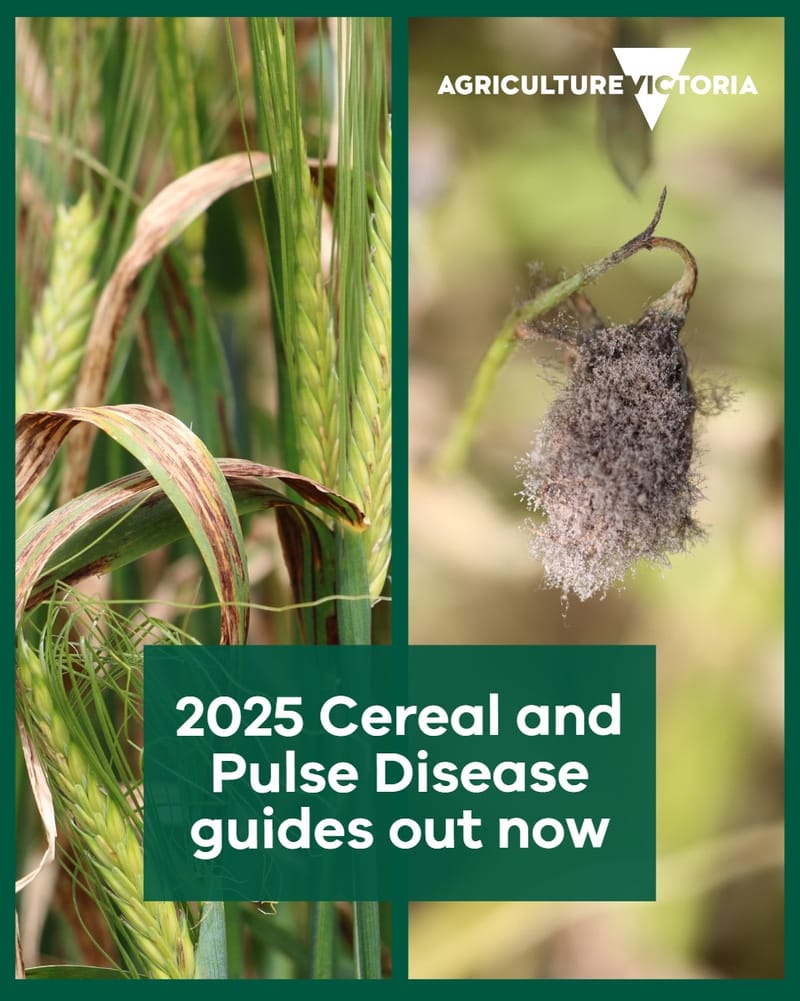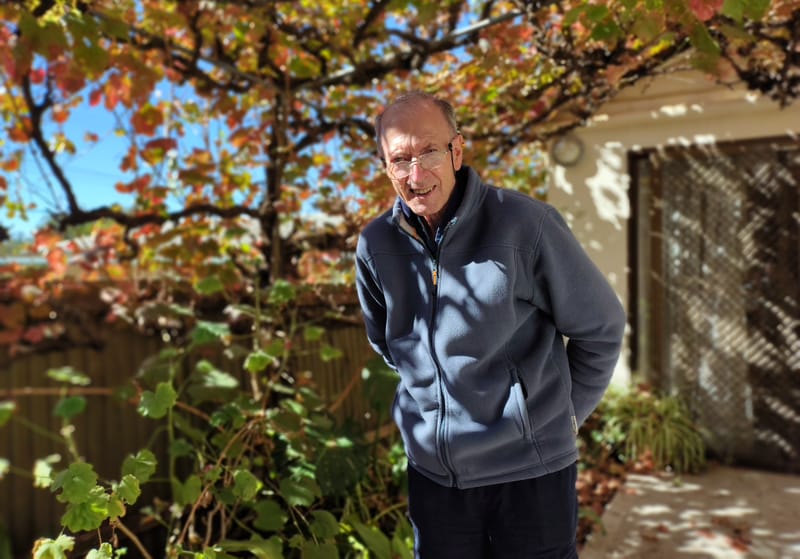Learning to live with varroa: Riverland beekeepers ready for change
RIVERLAND beekeepers are intensifying their preparations as the arrival of the devastating varroa mite looms ever closer, threatening to reshape the way honey production, pollination and hive management are carried out across South Australia.
RIVERLAND beekeepers are intensifying their preparations as the arrival of the devastating varroa mite looms ever closer, threatening to reshape the way honey production, pollination and hive management are carried out across South Australia.
While the pest has only recently breached the state’s borders, local apiarists say its spread from the eastern states is now a question of “when, not if.”
Local Loxton beekeeper Ian Cass said varroa’s rapid advance through New South Wales, Victoria and Queensland has created a sense of inevitability within the industry.
“At this stage there’s nothing more we’ve heard; they haven’t found any more that we know of,” Mr Cass said.
“I suspect there’s a fair chance it hasn’t gotten any further, but it’s only a matter of time. Varroa will happen. It’s happened in every other country in the world.”
The unstoppable spread
The varroa destructor mite is a parasitic pest that feeds on honeybees, weakening colonies and spreading multiple viruses that lead to colony collapse.
Its arrival and detection in Australia dates back to 2022 and forced authorities to shift from an eradication campaign to a management strategy, an adjustment that will soon test South Australia’s readiness.
Mr Cass said the Riverland’s reliance on bee pollination, particularly for almonds, stone fruit and melon crops, makes the region both vulnerable and critical to the state’s agricultural resilience.
“The fastest way it spreads is on the back of a bee truck,” he said.
“Some of these guys have done over a thousand kilometres from Queensland down. Once it got into Australia, it was always going to spread.”
Pollination demand and shortfalls
Each year, tens of thousands of hives are transported across South Australia for almond pollination, yet the local hive population still falls short.
“There’s just not enough bees in South Australia to do what we need to do,” Mr Cass said.
“I think there are about 67,000 registered hives, and that’s about the same amount of what’s actually needed as extra, but not all of them are suitable for pollination, because some are too small or not strong enough to make the trip.”
“That shortage is set to deepen as major new almond plantings at Monash Station and elsewhere come online, with interstate hives becoming harder to source if varroa restrictions tighten.”
Ecological and economic threat
When varroa does worsen in South Australia, its effects will extend beyond managed colonies, and it will affect wild bee populations — key contributors to pollination of backyard gardens and commercial crops — which are expected to collapse by up to 95 per cent.
“Once varroa comes in, that changes the landscape rather dramatically,” Mr Cass said. “They’re talking 90 to 95 per cent mortality of beehives, and that’s not just commercial hives — that’s wild ones too.”
“Without wild bees, Riverland growers of pumpkins, watermelons, cucumbers and seed crops will face an entirely new reality.
“They won’t have that choice anymore.
“They’re going to have to get managed bees in, or they won’t grow a crop.”
Managing a mite that can’t be eradicated
According to Mr Cass, the industry must shift from prevention to control, learning to live with the pest through a mix of mechanical, chemical and biological strategies.
“We’ve got to look at things like vented bottom boards — they’ll work to a certain extent — and chemical treatments are another possibility,” he said.
“In the longer term, the aim would be to get some form of resistance.”
There are, he explained, two natural behaviours that offer hope.
“One is that bees can become fastidious cleaners — they pull varroa off each other, and if they’ve got a vented bottom board, it drops out of the hive,” he said.
“The other way is the bees can smell it. In some countries, bees can smell the mite in the brood — they’ll pull infected pupae out and kill them. It’s their own pest control.”
These traits already exist in some strains of Asian and African bees, and researchers hope selective breeding could introduce similar resistance into Australian populations over time.
“Ideally we’d love to do that rather than chemicals,” Mr Cass said.
“I don’t want to be using chemicals if we can avoid it, but those first couple of years, I don’t think we’ve got an option, otherwise, we’ll get annihilated.”
Chemical and alternative treatments
Among the available treatments are organic acids such as oxalic acid, which can be vaporised in hives to knock down exposed mites.
“It’s not as toxic as some chemicals, but it’s only a knock-down — it won’t get those in the brood cells,” he explained.
“So there are quite a few ways we can cope — but if it gets too bad, then it’s chemicals. And that’s the problem: we’re trying to kill an insect off an insect.”
Because bees and mites are both arthropods, the margin for error is slim.
“If we get it wrong, you can kill both at the same time,” he said.
“There’s one chemical that, if it gets over 29 degrees, releases all its vapour at once and wipes out your bees — so we won’t be using that around here.”
Mr Cass noted that New Zealand beekeepers have access to certain lower-toxicity treatments not yet approved in Australia.
“We can’t legally use them here, but they work and they’re cheaper,” he said.
“Some are already being used in New South Wales commercially.”
However, Mr Cass mentioned that chemical control brings long-term consequences.
“Once we start using these chemicals, no honey can ever come back out of the brood box — ever,” Mr Cass said.
“You can’t use any honey that’s produced in there because it’s too toxic. The bees can use it, but we can’t.”
Mr Cass added that wax from treated brood boxes can no longer be recycled for human use — a major loss for commercial producers.
“So you’ve got to be very careful to keep brood boxes and honey supers completely separate,” he said.
A steep learning curve
Mr Cass said managing varroa will be “a very big learning curve” for Australian apiarists.
“It’s changed the world we know dramatically,” he said.
“And it will change agriculture quite dramatically as well, because all those crops that were being done by wild pollinators aren’t going to be — not for a while, and maybe not for a long time.”
How long recovery takes will depend on how quickly surviving bees can develop genetic resistance.
“If you lose 95 per cent of your wild hives, you’ve only got 5 per cent left,” he said.
“Everything will depend on how long it takes to build resistance — it could happen faster, or it could take 20 years. We just don’t know.”
Monitoring viruses and secondary pests
One promising sign, Mr Cass said, is that the varroa mites found so far in Australia do not appear to carry the devastating viral diseases seen overseas.
“Fortunately, at this stage they haven’t found any of the viruses that come with it in America — like deformed wing virus and colony collapse virus,” he said.
“We’re hoping and praying they don’t turn up.”
Local researchers, including Mr Cass himself, have participated in pre-varroa baseline virus testing of South Australian bees.
“They killed some bees and did tests to see what viruses we’ve got now,” he said.
“That gives them a baseline so they can check again later to see if new viruses appear — and that’s being proactive. It’s looking ahead.”
Mr Cass said preparedness, rather than panic, must guide the state’s response.
“Reaction’s the last thing you want to be doing,” he said.
“You want to be prepared as much as you can — weigh up what works best for us, then learn as we go.”
Climate-specific challenges
The Riverland’s hot, dry conditions will make some control methods unsuitable.
“We’re a totally different climate to Sydney or Queensland,” Mr Cass said.
“In those areas, when varroa comes in, hive beetle builds up too — it’s another issue.
“Hive beetle loves muggy weather and can finish off a weak hive.
“While Queensland and northern New South Wales have faced heavy hive beetle infestations alongside Varroa, South Australia’s arid climate offers some relief.
“This year we’ve had very little hive beetle.
“It’s been a stinking hot, dry year — but the good side is we’re not getting any hive beetle or very little of it.”
The long road ahead
Despite the challenges, Mr Cass believes Australian beekeepers can adapt.
“The biggest issue is surviving those first few years,” he said.
“We’ve got to be ready, keep monitoring, and do everything right — because if it gets out of control, we’re in big trouble.
But if we manage it right, we’ll come out the other side stronger.”
As the Riverland prepares for strategies to manage varroa, local beekeepers are sharing knowledge, testing equipment, and working together more closely than ever before — determined to safeguard both their hives and the crops that feed the region’s agricultural heart.






